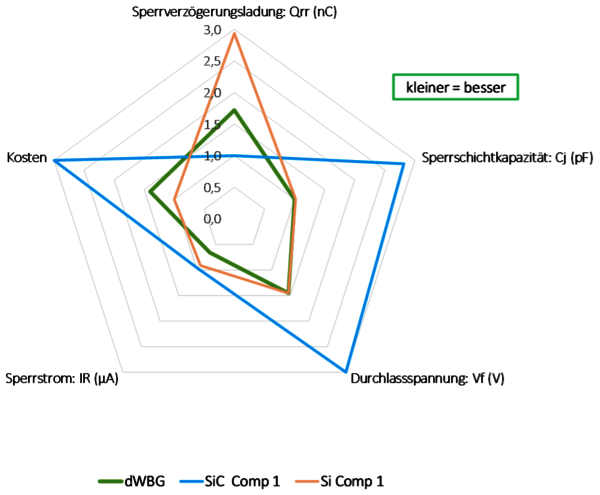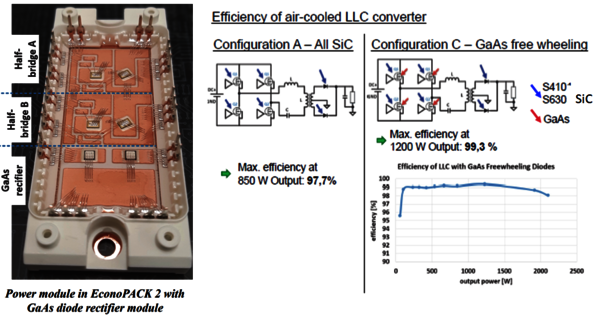Reliable and cost-effective
Using the GaAs technology, comparable results to SiC and GaN:Si can be achieved, but at significantly lower component costs.
The current production program is based on gallium arsenide (GaAs) substrates and includes only PIN diodes for soft- and hard-switching applications in the voltage range from 400V to 1,700V and currents up to 100A per chip. As GaAs is a semiconductor with a direct band gap larger than that of silicon, we call our devices direct wide bandgap (dWBG) diodes. At present, 3-5 PE is the only enterprise that uses GaAs also for power semiconductors. This substrate has so far only been used for high-frequency applications with very low voltages.
The most important electrical parameters and the cost position of dWBG diodes compared to SiC and Si diodes can be displayed very well in a spin network diagram:

Diodes for soft-switching applications:
- Optimized for low junction capacitance
- Optimized for low forward voltage Vf
- Optimized for low forward voltage at high temperatures (negative temperature coefficient)
Applications: Battery charging systems, inductive heating and welding as well as zero-voltage-switching applications
Diodes for hard-switching applications:
- Optimized for low reverse recovery charge Qrr, forward-delay time tr, repetitive peak reverse current Irrm
- Optimized for low forward voltage Vf
- Good electromagnetic compatibility EMC, thus additional EMC filters are not necessary
Applications: Power factor correction filters in switchgears, solar inverters, switch mode power supplies, motor control units, inverters for electric and hybrid vehicles, uninterruptible power supplies and diodes for IGBT modules
Proof-of-Concept for GaAs PIN diodes
At the PCIM Europe 2019 in Nuremberg, the Karlsruhe Institute of Technology compared the overall efficiency of a power rectifier diode module equipped with SiC MOSFET transistors and SiC Schottky diodes to SiC MOSFET and GaAs PIN diodes. The combination of SiC MOSFET and GaAs PIN diodes resulted in an overall efficiency of 99.3%, which is 1.6% higher than the pure SiC rectifier module:
